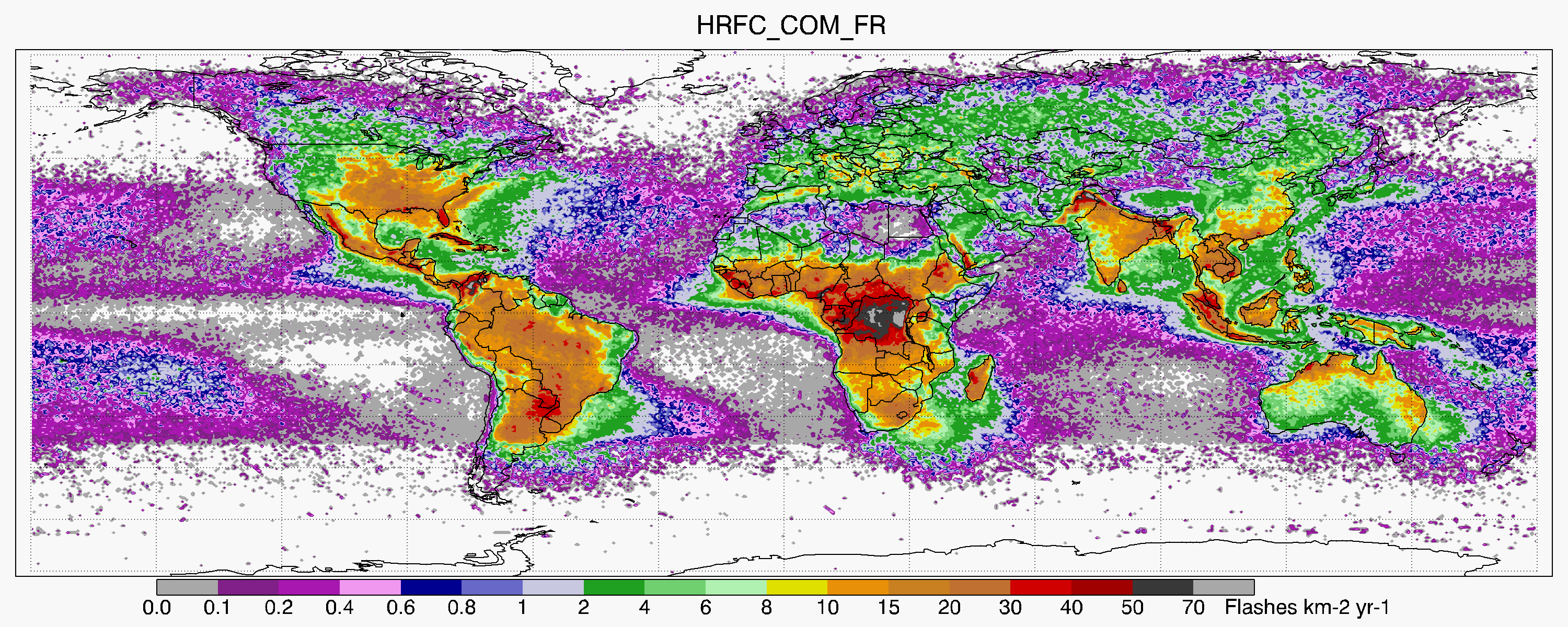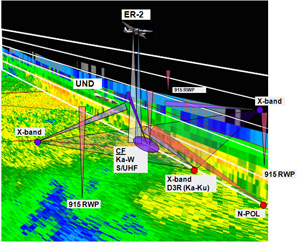The GHRC DAAC has published an update to the LIS/OTD Gridded Lightning Climatology Data Collection (collection DOI: http://dx.doi.org/10.5067/LIS/LIS-OTD/DATA311), to incorporate Lightning Imaging Sensor (LIS) data from the last year of data from the TRMM mission. This collection comprises the ten LIS/OTD Gridded Lightning Climatology Datasets listed below. These ten data sets offer full, annual, monthly and diurnal climatologies of lightning observed from space from May 1995 through December 2014, including both Optical Transient Detector and TRMM Lightning Imaging Sensor, at 0.5 and 2.5 degree resolutions. The three time series datasets also include data for January through April 2015. All data are available in both netCDF and HDF formats.

· LIS/OTD 0.5 Degree High Resolution Annual Climatology (HRAC) http://dx.doi.org/10.5067/LIS/LIS-OTD/DATA301
· LIS/OTD 0.5 Degree High Resolution Full Climatology (HRFC) http://dx.doi.org/10.5067/LIS/LIS-OTD/DATA302
· LIS/OTD 0.5 Degree High Resolution Monthly Climatology (HRMC) http://dx.doi.org/10.5067/LIS/LIS-OTD/DATA303
· LIS/OTD 2.5 Degree Low Res Annual Diurnal Climatology (LRADC) http://dx.doi.org/10.5067/LIS/LIS-OTD/DATA304
· LIS/OTD 2.5 Degree Low Resolution Annual Climatology (LRAC) http://dx.doi.org/10.5067/LIS/LIS-OTD/DATA305
· LIS/OTD 2.5 Degree Low Resolution Annual Climatology Time Series http://dx.doi.org/10.5067/LIS/LIS-OTD/DATA306
· LIS/OTD 2.5 Degree Low Resolution Diurnal Climatology (LRDC) http://dx.doi.org/10.5067/LIS/LIS-OTD/DATA307
· LIS/OTD 2.5 Degree Low Resolution Full Climatology (LRFC) http://dx.doi.org/10.5067/LIS/LIS-OTD/DATA308
· LIS/OTD 2.5 Degree Low Resolution Monthly Time Series (LRMTS) http://dx.doi.org/10.5067/LIS/LIS-OTD/DATA309
· LIS/OTD 2.5 Degree Low Resolution Time Series (LRTS) http://dx.doi.org/10.5067/LIS/LIS-OTD/DATA310



 Helen Conover and Sherry Harrison attended the EOS and SNPP SIPS Workshop, held May 2-3, 2017, at NASA GSFC. Conover and Harrison represented the AMSR Science Investigator-led Processing System (SIPS) at the GHRC DAAC, presenting the status of the AMSR SIPS activities to NASA Management. These activities include generating standard products for the AMSR-E and AMSR2 instruments, and near real-time AMSR2 data processing as part of NASA’s Land and Atmosphere Near real-time Capability for Earth Observing Systems (LANCE).
Helen Conover and Sherry Harrison attended the EOS and SNPP SIPS Workshop, held May 2-3, 2017, at NASA GSFC. Conover and Harrison represented the AMSR Science Investigator-led Processing System (SIPS) at the GHRC DAAC, presenting the status of the AMSR SIPS activities to NASA Management. These activities include generating standard products for the AMSR-E and AMSR2 instruments, and near real-time AMSR2 data processing as part of NASA’s Land and Atmosphere Near real-time Capability for Earth Observing Systems (LANCE). Sherry Harrison and Helen Conover attended the Land Atmosphere Near-real-time Capability for EOS (LANCE) User Working Group telecon on April 25, representing the LANCE AMSR2 element of the AMSR Science Investigator-led Processing System (SIPS) at the GHRC DAAC. Harrison presented recent accomplishments, current status and plans for LANCE AMSR2. Will Ellett, GHRC’s project manager for the Lightning Imaging Sensor on the International Space Station (ISS LIS), also attended, to support ISS LIS PI Dr. Richard Blakeslee (NASA/MSFC) in his discussion of planned near real time processing and distribution of ISS LIS data by the GHRC.
Sherry Harrison and Helen Conover attended the Land Atmosphere Near-real-time Capability for EOS (LANCE) User Working Group telecon on April 25, representing the LANCE AMSR2 element of the AMSR Science Investigator-led Processing System (SIPS) at the GHRC DAAC. Harrison presented recent accomplishments, current status and plans for LANCE AMSR2. Will Ellett, GHRC’s project manager for the Lightning Imaging Sensor on the International Space Station (ISS LIS), also attended, to support ISS LIS PI Dr. Richard Blakeslee (NASA/MSFC) in his discussion of planned near real time processing and distribution of ISS LIS data by the GHRC.




